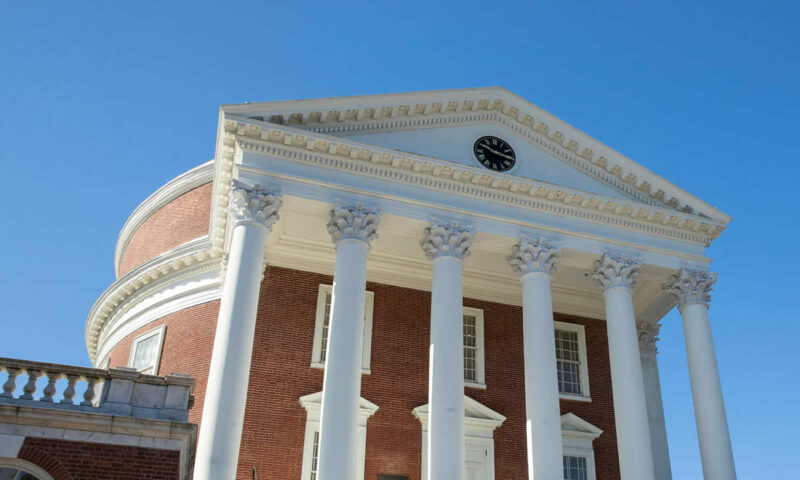I’m Meredith Flabiano, an M.S. in Commerce graduate student in the Marketing and Management Track. My undergraduate degree was in astrophysics, so enrolling in a master’s program for business and marketing was a big switch for me. The program has already taught me more about the “business world” than I ever expected to learn in such a short time.
This post focuses on my experience in the Marketing & Management Track, but you should know how it fits into the entire academic plan. The M.S. in Commerce is broken into three parts:
- Integrated Core Experience, in which we take a deep dive into all things business (strategy, cost management, marketing and analytics, organizational behavior, finance, etc.).
- Track-specific courses, where we take classes focused on our chosen track (Business Analytics, Finance, or Marketing & Management).
- Global Immersion Experience, during which we study international business. GIE culminates in a three-week international experience that allows us to learn about business and apply our knowledge in real time.
Marketing & Management Classes
This spring semester, we have four track-specific courses, one elective of our choice, and one global commerce course. For those interested in the Marketing & Management Track, these classes might interest you:
Developing and Managing Innovative New Products—In this class, we learn about creativity and innovation. We study the iterative process of new product development and design thinking, while studying the context a new product experiences when tested in the world. This class gives us a 360-degree view of the product development stage.
Consumer Behavior and Pricing Strategy—This class is broken up into two parts. The first half of the semester, we focus on consumer behavior (if you like psychology, you’ll love this section). We discuss how consumers make decisions, how companies and advertisers can reach different types of people, and how to influence customers’ purchasing decisions. The second half of the semester, which starts after spring break, focuses on the pricing strategies of products across different industries.
Brand Strategy & Integrated Marketing Communication—This class focuses on branding strategies for new and established companies. We learn about what goes into a brand (logo, purpose, jingle, characters, etc.) and how the brand can differentiate itself in a crowded market and appeal to different consumers.
Social Media Marketing Metrics and Strategy—This last class is one of my favorites! We all use some form of social media and know those platforms well, but in this class, we learn about paid media and how companies can optimize their use of different platforms. We analyze new and up-and-coming social sites and predict whether or not they will grow into the next big digital platform.
Foundations of Global Commerce—Students in each track in the Program take this course as a prerequisite for our three-week stint abroad for the Global Immersion Experience. This class is mainly discussion-based around several readings each day, making it more of a seminar than a lecture. We discuss the “business world” as a complex and dynamic system, learning about the history of globalization, the current world order and how different countries fit into it, and the ever-changing future of global commerce.
Emerging Topics of Commerce: Python—This last class I chose from a list of offered electives. I missed hard science from my undergrad years, and coding Python every Friday was the best way I could get a little of that analytical side of me back. This class focuses on teaching beginners the fundamentals of the Python language and then takes a deep dive into machine learning through Python. The main focus of this class is to get us comfortable with using the language because analytics are so critical to understanding marketing today and understanding a computing language is incredibly valuable in the workplace.
Projects
The best part of this Program is the opportunity our professors give us to work with and apply our skills to real-life companies. We get to interact with their executives and employees throughout the semester and then present recommendations to improve some aspect of their company to them (brand, strategy, media, etc.).
Brand Management Project—Our brand management class gave us the opportunity to work with a local brewery to establish and improve its brand identity. Pro Re Nata, a local brewery, is currently undergoing a lot of changes to its space and business strategy. We were tasked with using customer research to give company executives recommendations that will help create a solid identity and convey that identity to customers in order to increase profitability. The best part is that we work closely with the company and its employees. They truly value our input, and it feels like we are making a difference.
Social Media & Digital Strategy Project—In this class, we had the chance to use new, never-before-seen technology to track real-time social media data from Goodlife Clothing and its customers (posts, sentiment analysis, media campaign details, and more). We spent a lot of time analyzing Goodlife Clothing’s paid media and its competitors’ social media pages, putting together several recommendations for enhancing the company’s online presence. The project taught us how to give recommendations for digital media strategies in the “real world” with slide decks and presentations.
Weekly Schedule

A sample week from the Marketing & Management Track.



